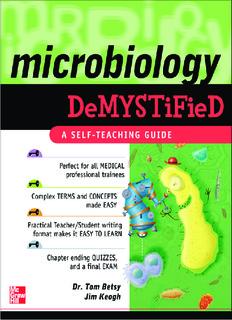Introduction
When you hear the words “germ,” “bacteria,” and “virus” you might cringe, running for the nearest sink to wash your hands. These words may bring back memories of when you caught a cold or the flu never a pleasant experience. Germs, bacteria, viruses and other microscopic organisms are called microorganisms, or microbes for short. And as you’ll learn throughout this book, some microbes cause disease while others help fight it.
Think for a moment. Right now, there are thousands of tiny microbes living on the tip of your finger in a world that is so small that it can only be visited by using a microscope.
In this book we’ll show you how to visit this world and how to interact with these tiny creatures that call the tip of your finger home.
The microscopic world was first visited in the late 1600s by the Dutch merchant and amateur scientist Antoni van Leeuwenhoek. He was able to see living microorganisms by using a single-lens microscope. We’ve come a long way since Van Leeuwenhoek’s first visit.
Today scientists are able to see through some microbes and study the organelles that bring them to life. It wasn’t until the Golden Age of Microbiology between 1857 and 1914 when scientists such as Louis Pasteur and Robert Koch made a series of discoveries that rocked the scientific community.
During this period scientists identified microbes that caused diseases, learned how to cure those diseases, and then prevented them from occurring through the use of immunization. Scientists were able to achieve these remarkable discoveries by using culturing techniques to grow colonies of microbes in the laboratory.
Once microbes could be grown at will, scientists focused their experiments on ways to slow that growth and stop microbes in their tracks killing the microbe and curing the disease caused by the microbe.
Culturing microbes is central to the study of microbiology. You’ll be using many of the same culturing techniques described in this book to colonize microbes in your college laboratory. We provide step-by-step instructions on how to do this.









Be the first to review “Microbiology Demystified”